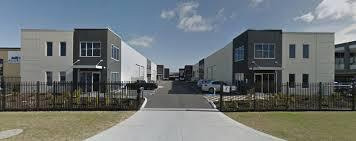Seeing is believing- however the inherent limitations of the human eye prevent us from seeing outside a narrow range of visible light. Infrared energy is the electromagnetic radiation given off by the sun, as well as every object and living creature on earth, and something that can only be viewed by humans using a thermal imaging camera (TIC). Infrared radiation falls just outside the wavelengths of visible light at around 750nm (nanometers), and is part of a range of longer frequencies; along with terahertz, microwaves and radio waves. Simply by connecting a CompactPRO to your phone and loading the app, your spectral sensitivity will be enhanced to discover a world you’ve never seen before.

How It Works
Each and every thermographic camera operates by measuring the amount of infrared energy emitted, transmitted, and reflected by an object. The use of tiny vanadium oxide sensors known as microbolometer’s allow thermal cameras like the RevealPRO to operate portably, and not have to rely on stationary cryogenic cooling to work correctly. The camera takes a surface temperature measurement of the heat emitting from an object, and projects it as an image on the screen called a thermogram. While this function allows for identification of cool or hotspots beneath a surface, it does not, as is commonly misconceived give users x-ray vision or the ability to literally see through a wall. Black bodies have a baseline emissivity of 1, and provide a template against which other degrees of radiation are measured. An algorithmic function is then utilized to account for and factor out multiple sources of infrared energy surrounding the object, and build the image that is then displayed on the LCD screen.
Camera Lens
Unlike their cousins the optical cameras, thermal imagers do not rely on focusing lenses comprised of glass, as it blocks out long-wave infrared light. Until recently, IR cameras historically relied on lenses made from specialized materials such as Germanium or Sapphire crystals, which are fragile and expensive to produce. Chalcogenide glass is a newer, and cheaper material that allows for lower entry costs of thermal cameras towards the marketplace, and into the hands of the customer. The material is ideal for lenses, as it allows for the transmission of a wide range of electromagnetic frequencies through its surface. Rectangular light sensing pixels at the focal point of the lens, called Focal Plane Arrays, (FPA’s) help receive and focus the Infrared energy towards the microbolometer.

Display
Images tend to be either monochromatic or display a false color scheme to make any variances in temperature discernable. The camera allocates each individual pixel from a 76,800-pixel display to represent a temperature. After it’s calculated, the pixels are then assigned colors, which build the resulting image on the screen. Darker shades of blue, purple and green are usually employed in the thermal color scheme to represent lower temperatures, while brighter colors (yellow, orange, red) frequently indicate the presence of heat. Infrared devices such as the RevealPRO provide an array of unique filters to give users flexibility, and a wider visualization platform for identifying temperature differentials.
Differences between Night Vision Devices (NVD)
While both night vision scopes and thermal imagers often fall beneath the umbrella term “NVDs”, they work in very different ways. Traditional night vision scopes use a vacuum tube (aka image intensifier) which heightens low levels of ambient light to create distinguishable images, and renders them in different shades of green. Extensively used in military and law enforcement circles, they are invaluable aids for surveillance and suspect identification. However, achieving well-defined images is highly conditional upon the presence of existing ambient light. Looking through a night vision scope in a totally dark room will provide little to no clarity. Thermal cameras, by contrast, require no light to operate, and can scan through complete darkness- as well as smoke, fog, and haze. While NVD’s provide more “realistic” and contoured images, their usage outside the military complex remains infrequent. With an ever-increasing amount of applications, thermal cameras use their colorful, dramatic contrasts to light up objects and figures from a distance, and highlight areas of attention across a myriad of settings.


